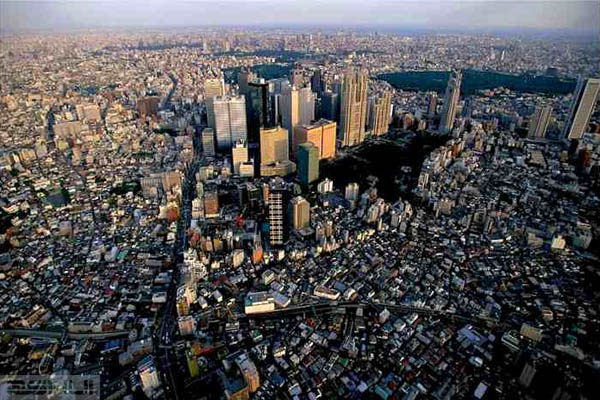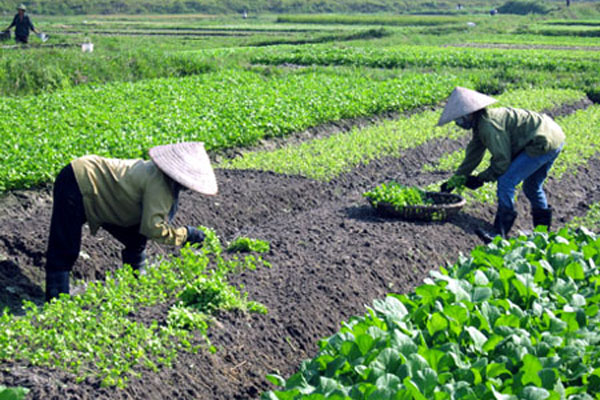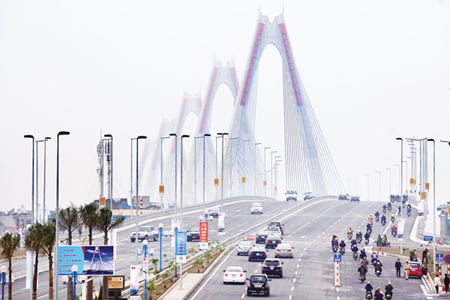Hanoi, with a population of three million (75.000 in 1926; 130,000 in the 1930’s) comprises the city proper and the rural outskirts dozens of times its area. Accelerated urbanisation, especially since the launch of the policy of Renovation (1986), with the attendant building of factories and residential quarters, has entailed infringement of agricultural areas. How has this affected traditional agriculture and way of life in suburban villages?

A survey of Thanh Tri district south of Hanoi undertaken by the National Institute of Agronomic Sciences (NIAS) in collaboration with the International Centre for Co-operation in Agronomic Research for Development (COARD) and the Research Unit in Agricultural Prospects and Policy (RUAPP), has supplied some answers to this question:
The choice of Thanh Tri is vindicated by several reasons: this district covering 10,086 ha (5,558 ha of arable land) with a population of 190,000 (of whom 110,000 earn their livelihood from farming) is the main area of expansion of the capital; it receives the quasi-totality of the city’s waste water and is thus more heavily polluted than most other peripheral districts.
One may divide Thanh Tri into three agro-ecological zones: the area of vegetable growing to the east (along the Red River), that of rice fields and fish-rearing in the centre, and that of low-lying rice- fields to the west.
Besides gradual urbanization with a temporary stop during the American war 1965-1975 agriculture in that district, as in the whole of North Vietnam, is influenced by three factors:
1. Collectivization (land reform before 1960, generating agricultural development above the level of 1945; creation of more extensive cooperatives between 1960 and 1980 with attendant decline in production: between 1980 and 1988: partial decollectivization, with contractual work targets entrusting part of production activities to individual peasants who thus benefit from part of the profits, hence agricultural development); agricultural upsurge: 1988-1990’s (allocation of land to farmers, who now hold direct responsibility for their shares; role of cooperatives reduced to a minimum).
2. Development of the irrigation network, firstly due to collectivization (100 per cent of rice fields irrigated). Along with the allocation of plots, the system of small pumping stations ensures that irrigation is better adapted to individual needs.
3. Change in the selection of seeds (green revolution): starting from 1965, short-growth rice seeds (IR8, etc.) have replaced traditional varieties (long growth, high stalks). The use of chemical fertilizers has become more common.
The positive results brought about by those three factors became visible with decollectivisation.
The effects of urbanization have been fairly contradictory.
It has reduced the area of arable land (due to the construction of major works, factories, offices, roads, etc.). Between 1970 and 1993, this area was reduced by 6,206 to 9,669 ha while the population increased from 113000 to 198,300. Between 1960 and 1993, per capita food production showed an average yearly decrease of 0.4 per cent. However, the farmers’ standard of living has improved because of their orientation toward more profitable economic systems.

It has made flooding more frequent: the district is at a lower level than the city. In the flood season, the level of the waters of the Red River is 6-8 meters higher than that of the district. The main cause leading to an increase in the rate of flooding is the multiplication of buildings, which has filled up lakes and ponds. To this is added the volume of waste water from the city flowing into the rivers crossing the district. To remedy such a situation and take advantage of the market economy, part of the rice fields have been converted to fish breeding.
It has polluted the environment. The volume of waste water pouring into its four rivers has increased (120,000 cubic meters per 24 hours in the 1960’s; 230,000 cubic metres in the 80’s). Three industrial centres contribute to the pollution: Van Dien (factories making phosphates, dry batteries, lacquer, paints…; Vinh Tuy (spinning and weaving mills, food products…); Thuong Dinh (50 factories and small enterprises, chemical and mechanical). Van Dien in particular puts into the atmashphere suspended dust amounting to 0.25-0.3 mg per cubic metre.
Industrial waste water contains heavy metals (Ca, Pb, Cd, Hg, Cr, Ni…) in amounts equal to or greater than permitted norms for fish breeding. However, it also contains nutrients for crops (N, P, Ca…) and fish. Hence its continued use for pisciculture and irrigation. Most ponds take it in, which has improved the catch. Fish breeding, which occupied an insignificant place before 1960, has grown into an important branch in the district’s agriculture. So ways have had to be found to lower the level of toxicity of the water (decantation, selected times for pumping it in…).
Farmers have acquired some experience in the use of waste water for rice and vegetable growing (taking advantage of nutrients and curbing damage caused by toxic substances).
Pollution (chemical and bacteriological) affects to a fairly serious degree the people’s health (eye, skin, gynecological and respiratory ailments…).
Urbanization thus decreases the cultivable area (0.9 per cent per year), aggravates flooding and pollution: this, coupled with population growth, causes a decrease in per capita food production (minus 0.4 per cent per year). That accounts for a transformation of the agricultural structure: evolution from agriculture toward semi- agricultural work along with the development of extra-agricultural crafts. The area planted with rice yields ground to more profitable crops (vegetables, aromatic plants, medicinal plants, flowers, bonsai) and to fish breeding (Thanh Tri now ranks first among suburban fish-breeding centres).
Decollectivisation has given a push to families engaged in agricultural production (in particular encouraging them to diversify their raising of animals: fish, pigs, poultry, cows, frogs, turtles…) and to tackle non-agricultural activities: distilling alcohol, making bean curd, vermicelli, providing services…). Differences among peasant households in terms of fortune and income deepen.
The above study shows how changes have been brought to traditional rural areas by urbanization. If it continues at the same rate as now, Thanh Tri, will lose half of its cultivable land. Some villages close to the capital city will have none of it left. Flooding and pollution will be aggravated.
However, urbanization creates markets for agricultural products and a demand for labor which has accelerated the transformation of suburban agriculture. Self-sufficient agriculture has evolved into a market-oriented agriculture. The share of income coining from agriculture keeps declining.
An undertaking of primary importance is to work out schemes for both agricultural development and suburban urbanization.



